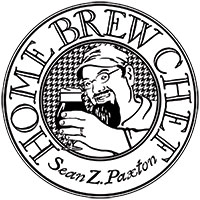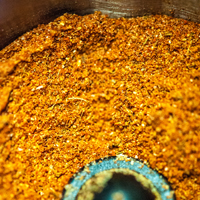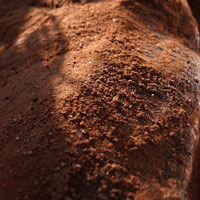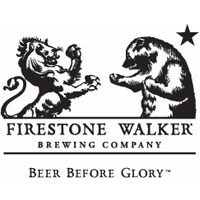Homemade Za’atar
What is Za’atar:
 Let’s celebrate diversity and find compassion for other cultures while we remember our own declaration of independence. I want to celebrate Middle Eastern flavors because countries like Syria, Iran, Libya, Yemen, Sudan, and Somalia have a rich culinary and cultural significance to our society. The cuisines of these six countries have similarities among their flavors and ingredients that can broadly be categorized as Middle Eastern. These are the flavors I want to celebrate. Culinary diversity makes our world special and our diets unique, as this Homemade Za’atar is, either in it’s a fresh or dried format.
Let’s celebrate diversity and find compassion for other cultures while we remember our own declaration of independence. I want to celebrate Middle Eastern flavors because countries like Syria, Iran, Libya, Yemen, Sudan, and Somalia have a rich culinary and cultural significance to our society. The cuisines of these six countries have similarities among their flavors and ingredients that can broadly be categorized as Middle Eastern. These are the flavors I want to celebrate. Culinary diversity makes our world special and our diets unique, as this Homemade Za’atar is, either in it’s a fresh or dried format.
Za’atar, pronounced ZAH-tahr, is an aromatic seasoning blend as common in the Middle East as ketchup is in the United States. In Arabic za’atar translates to “thyme” and the seasoning derives many of its health benefits (such as antioxidant, antiseptic, and fungicide properties) from this herb. Oregano and thyme both share the essential oils thymol and carvacrol, which can help explain why some versions of this spice blend were used and given as a medicine to treat coughing and other ailments.
Different herbs (both fresh and dried) in different proportions have led to variations from country to country, but the essence of za’atar remains very similar across all borders. Herbal and slightly bright with an almost minty undertone, thyme is typically combined with oregano’s slight bitterness and deeper grassy flavor, marjoram’s slightly sweet herbal note, and tart, citrusy, yet earthy sumac—a shrub that produces a fruit that is dried and ground into a reddish-purple powder. This flavor is the backbone of za’atar. Sesame seeds often add texture and a slightly nutty finish. Some recipes include chili pepper, ranging from Aleppo pepper, chili pepper flakes to cayenne. I have recently discovered the Turkish Crushed Urfa Chiles, which have a deep earthy flavor. This spice would be a wonderful addition to the spice blend. As with the history of Za’atar and the different variations, it can be customized to your liking, while still containing the essence and health benefits to the food you use it on.
With these different variations and the herbs | spices being fresh or dried, I have created two recipes for Za’atar. The first recipe uses dried herbs, found in most well-stocked pantries, or can be found at a local Spice Shop. The second recipe for Fresh Za’atar uses mostly fresh herbs, with a few dried spices that are too difficult to obtain fresh in the United States.
With the combination of these ingredient flavors, za’atar can be used on many different dishes and recipes. I enjoy the herbal flavors in my Homemade Za’atar, which remind me of some of the Noble hop aromas along with newer citrus-forward hops. From IPA to Brown Ale, slightly tart Gose or Berliner Weiss, and dry Saison and Pilsner (both Bohemian Pilsener and German Pilsner) za’atar’s flavor characteristics work well with many beer styles. So whether it’s a dry mix or freshly prepared, this spice blend should be in your pantry to enhance the flavors of summer.
What to use Homemade Za’atar on? Try this Middle Eastern Cucumber Salad recipe, that is dusted with it. Sprinkle it over Baba Ghanoush, Beer Hummus, or Middle Eastern Falafel after they are baked or fried, or a bowl of Greek-style plain yogurt, with a pool of olive oil. Za’atar can also be used as a Spice Rub, perfect for most cuts of lamb, goat, beef, chicken, or fish. It’s used in Chicken & Turkey Köfte with IPA recipe. Try adding a wonderful fruity extra virgin olive oil to some of the Za’atar to make a marinade that can be brushed onto a protein or slices of vegetables (think Za’atar Roasted Eggplant, zucchini or other squash, sweet potatoes, bell peppers, asparagus), before they hit the grill. Brush a whole head of cauliflower with this infused oil and roast | smoking it whole, serving it as a vegetarian | vegan main course. This Za’atar oil can also be served alongside fresh-baked Homemade Pita Beer Bread or lavash bread as a dip. Try brushing it on my Homemade Brewers Crackers with Spent Grain for an added twist. Once you try this Middle Eastern Spice Blend, you’ll find many uses and applications for it in your Beer Cuisine exploration.
Makes: about 1/4 cup
Adapted from BeerAdvocate Magazine: Cuisine à la Bière | Jul 2017 | Issue #126
-
2 tablespoon
sumac, dried available HERE
- 1 tablespoon thyme, dried
- 1 tablespoon oregano, dried,
- 1 tablespoon marjoram, dried
- 1 tablespoon sesame seeds, white toasted
- 1 tablespoon sesame seeds, black toasted
- 1 teaspoon salt, kosher or sea (optional)
- 1 teaspoon thyme, fresh leaves only
- 1 teaspoon oregano, fresh leaves only
- 1 teaspoon marjoram, fresh leaves only
-
2 tablespoon
sumac, dried available HERE
- 1 tablespoon sesame seeds, white toasted
- 1 tablespoon sesame seeds, black toasted
- 1 teaspoon salt, kosher or sea (optional)
- In a small bowl, combine the sumac
, thyme, oregano, marjoram, sesame seeds, and salt (if using). This will result in a coarser texture. For a finer textured za’atar, add the ingredients to a mortar and pestle and crush the sumac, herbs, and sesame seeds together. When the consistency is that of a spice rub, it’s done.
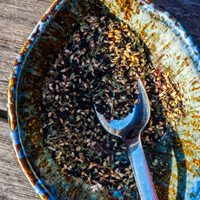
- Transfer the dried za’atar to a sealable jar and use within six months.
- Measure out the thyme, oregano, and marjoram leaves and mince them with a sharp knife. Transfer this to a bowl and stir in the sumac
and sesame seeds, seasoning with salt, if using. The salt will pull some moisture from herbs, making the seasoning slightly damp. This version can also be made in a mortar and pestle to infuse the herbs into the other ingredients.
- When refrigerated in a sealable jar, fresh za’atar keeps for up to a week.
More Middle Eastern Beer Cuisine Recipes:

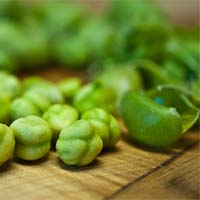

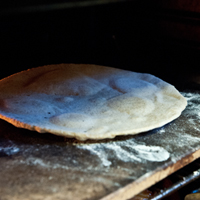


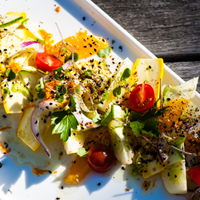
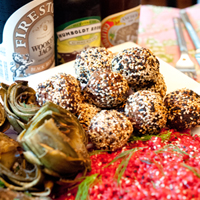

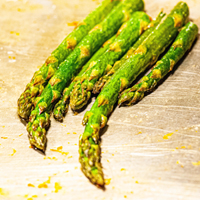
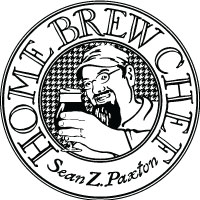
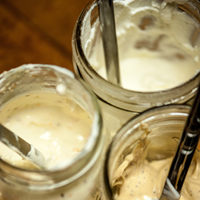
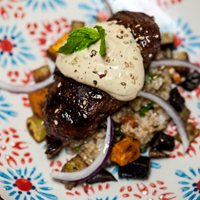

More Mediterranean Beer Cuisine Recipes:



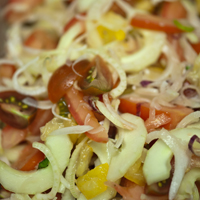

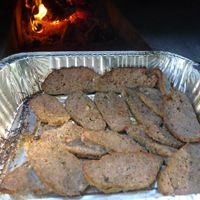



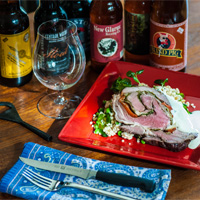







More Spice Rub Recipes:
